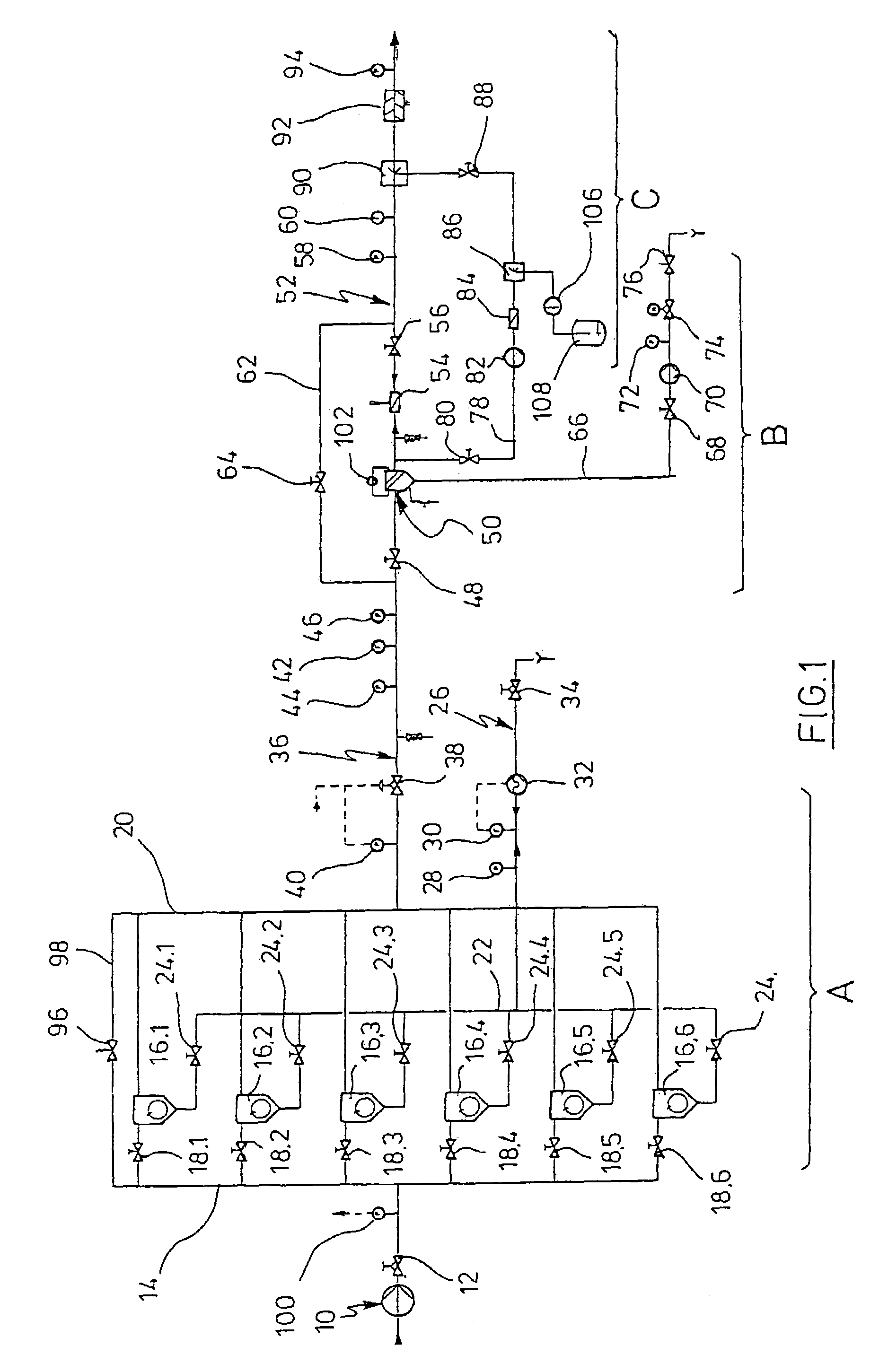Installation for the removal and the deactivation of organisms in the ballast water
a technology for installing and deactivating organisms, which is applied in the direction of gravity filters, water/sludge/sewage treatment, loose filtering material filters, etc., can solve the problems of organisms which cannot be deposited with filtration equipment, and achieve the effect of high operational reliability and relatively low electrical energy demand
- Summary
- Abstract
- Description
- Claims
- Application Information
AI Technical Summary
Benefits of technology
Problems solved by technology
Method used
Image
Examples
Embodiment Construction
[0030]While this invention may be embodied in many different forms, there are described in detail herein a specific preferred embodiment of the invention. This description is an exemplification of the principles of the invention and is not intended to limit the invention to the particular embodiment illustrated
[0031]The installation according to FIG. 1 has the steps or components A, B and C. The component A serves for the gravity separation of parts in water which are heavier than water. The component B is concerned with a fine filtration step.
[0032]The component C is concerned with the metered addition of a desinfectant. Subsequently, the individual components will be commented on in more detail.
[0033]A first feed pump 10, preferably a rotational pump, conveys via a stop valve 12 into a duct 14, which is in connection with six hydrocyclones 16.1 to 16.6, via stop valves 18.1 to 18.6. The upperflow of the hydrocyclones 16.1 to 16.6 is connected to a common duct 20. The underflow of ...
PUM
| Property | Measurement | Unit |
|---|---|---|
| pressure drop | aaaaa | aaaaa |
| cone angle | aaaaa | aaaaa |
| pressure drop | aaaaa | aaaaa |
Abstract
Description
Claims
Application Information
 Login to View More
Login to View More - R&D
- Intellectual Property
- Life Sciences
- Materials
- Tech Scout
- Unparalleled Data Quality
- Higher Quality Content
- 60% Fewer Hallucinations
Browse by: Latest US Patents, China's latest patents, Technical Efficacy Thesaurus, Application Domain, Technology Topic, Popular Technical Reports.
© 2025 PatSnap. All rights reserved.Legal|Privacy policy|Modern Slavery Act Transparency Statement|Sitemap|About US| Contact US: help@patsnap.com



